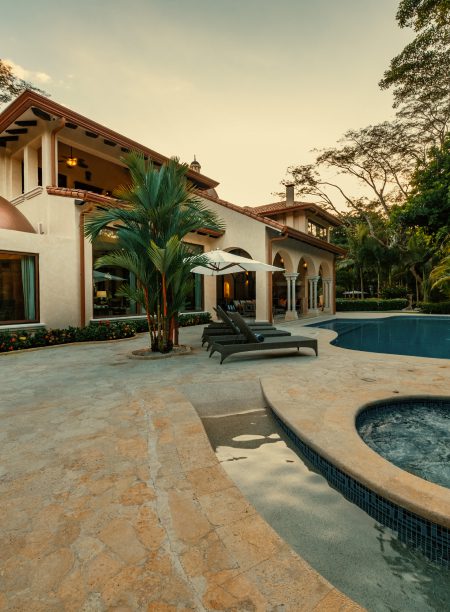Costa Rica is a beautiful place with tropical weather all year round, making it a perfect destination to plan your vacation. This Central American country is a touristic destination known for its abundant wildlife, beaches, surfing spots, waterfalls, etc. This country has a sound healthcare system and a high literacy rate compared to other regions. Owing to these factors alone, it should not be as much trouble as many other places are when it comes to communicating with locals because they can speak English in addition to their own language, which makes things easier for travelers too, especially if one is looking forward to getting some information about the best places to have vegan food in Costa Rica.
Costa Rica has many small cafés that serve traditional vegetarian food, making it an ideal destination for vegans and vegetarians who may find it hard to get good food elsewhere. This blog will be a handy resource for all the vegans and vegetarians traveling to Costa Rica.

Why is Costa Rica a Great Destination for Vegans and Vegetarians?
Costa Rica is a standout travel spot for vegans and vegetarians as one of the world’s most sustainable and biodiverse places. Its heightened consciousness and tolerance of diets free from animal products, coupled with abundant farm products, makes it a perfect destination for individuals who adhere to this kind of food regimen.
Here are some reasons why Costa Rica is so good for vegan or vegetarian people:
- Eco-Friendly Tourism: Costa Rica stands out for eco-friendly and sustainable tourism as it incorporates environment-friendly tourism policies and aids in preservation. Furthermore, this also extends to the food sector by adopting organic farming methods by most hotels and restaurants to get their supplies locally.
- Rich Biodiversity: The rich biodiversity in Costa Rica enables it to have many plant products, such as fresh fruits and vegetables. Hence, you can prepare various delicious and healthy meat- and dairy-free dishes.
- Growing Awareness: The people of Costa Rica are more aware and acknowledge veganism and vegetarianism everywhere. Consequently, such proportions have increased vegetarian and vegan options in Costa Rica.
- Availability of Fresh Produce: Fresh produce is always available due to the tropical climate and fertile soils. Everywhere you go, it’s easy to see farmers’ markets selling fruits, vegetables, and seeds, among other things, making eating vegan in Costa Rica another amazing experience.
- Plant-Based Ingredients: Are you seeking more information on plant-based ingredients in traditional Costa Rican diets? Rice, beans, plantains, and corn are among the most commonly used plant-based ingredients. This can make for delicious meals that are appetizing to both vegans and vegetarians.
- Vegan and Vegetarian Restaurants: According to statistics, the Costa Rican capital is seeing an increase in vegan and vegetarian outlets. You can find them in casual, café-like settings as well as upscale fine dining places.
- Health and Wellness Focus: Costa Rica is surely quite famous for promoting good health and wellness in general. Many areas, including those which revolve around yoga and eco-tourism, can be easily accessed, offering numerous eateries mainly for vegetarians and vegans that concentrate on healthy eating.
- Culinary Creativity: A new food trend observed in Costa Rica is the use of new meatless diet inventions, such as vegetarian and vegan meals. Traditional national dishes popular in this country have altered versions according to these modern trends while still being full of tropical flavors, which you can find in every common vegetarian meal.
- Community Support: In Costa Rica, there are a number of people who are vegan or vegetarian and offer each other help. When one interacts with community members, it might be possible for the locals to provide advice on where to get vegetarian and vegan foods.
- Educational Opportunities: Various workshops and retreats in Costa Rica are tailored for vegan and vegetarian cooking. Travelers can learn ways of adding plant-based foods into their diets through these experiences; moreover, they provide delicious, unique, and common vegetarian meals.
Vegan and Vegetarian-Friendly Regions and Cities
Costa Rica has many areas and towns which meet the needs of tourists who follow veganism and vegetarianism. You can get different locations—urban centers full of life on the one hand or calm beach towns on the other—that offer yummy meals made from plants.
Below are a few of the top regions and cities for veganism or vegetarianism in Costa Rica:
- San José: San José is the capital city and has many restaurants where you can find vegan and vegetarian diet options from around the world.
- Monteverde: Monteverde is known for eco-tourism and offers several plant-based eateries that go hand in hand with sustainable practices. Monteverde does not allow animal killings in its area; everyone who eats there respects this rule and follows full-spectrum plant-based diets.
- Puerto Viejo: Puerto Viejo is located along the coast where people in these areas do not use sea animals for food at all; for this reason, they still make some vegan dishes full of taste which are different from other parts of Costa Rica.
- Nosara: A center for yoga and wellness with an assortment of vegan and vegetarian options, offering an array of healthy food selections.
- Tamarindo: Tamarindo is an increasingly popular destination for surfers, with numerous restaurants specializing in vegan and vegetarian foods that provide tasty options for those who want to enjoy eating vegan in Costa Rica.
- Nicoya Peninsula: As one of the Blue Zones, Nicoya Peninsula seeks to promote longevity through healthy lifestyles that are based on plants, including plenty of vegan diets at available restaurants.
- La Fortuna: It is situated in proximity to the Arenal Volcano and has seen a rise in health-oriented restaurants catering to vegetarians and vegans.
- Santa Teresa: Santa Teresa is a haven for surfers as well as yoga lovers and has various vegan offerings that go along with its cool atmosphere.
- Manuel Antonio: Manuel Antonio is famous for its national park, surrounded by many restaurants that provide different diet choices for vegans and vegetarians.
- Cahuita: It is a tiny town on the Caribbean coast and has vegan-friendly places to match its easy-going atmosphere.
- Uvita: This is a part of Costa Ballena, which has environmentally friendly hosting facilities and some delicious options for vegan and vegetarian diet-conscious tourists.
- Jaco: Jaco is home to a lively Costa Rica vegan resort that offers plenty of places to eat vegan or vegetarian food.

Top 10 Typical Costa Rican Dishes and How to Enjoy Them in Vegan/Vegetarian Style
Costa Rican cuisine has many typical dishes that can be easily changed to be vegan or vegetarian. Even if you modify them just a little bit to fit your favorite kind of food, you can still taste the original flavors of the tropics.
Below are the top 10 typical dishes and how they can be enjoyed vegan or vegetarian:
- Gallo Pinto: A traditional breakfast dish made from rice and beans that can be consumed as a vegan meal.
- Casado: A typical dish for lunch that comprises rice, beans, plantains, and salad. It may also have tofu or tempeh as optional proteins for vegans.
- Patacones: These are fried green plantains with dips that are friendly to animal friends; they are ideal snacks or appetizers.
- Sopa Negra: A black bean soup that does not require any animal products for its preparation.
- Arroz con Vegetales: It is a combination of rice with mixed vegetables, making it a simple yet yummy dish.
- Chorreadas: To prepare vegan chorreadas, you only need to avoid using dairy products.
- Ensalada de Palmito: Heart of Palm salads are an option for vegans and vegetarians looking for a healthy and flavorful meal, as they contain fresh vegetables such as tomatoes, lettuce, and avocados, hence being combined with tomatoes, lettuce, and avocados.
- Empanadas: For a delicious vegan alternative, stuff corn pastries with beans or veggies will be a must-have.
- Picadillo: Sometimes taken as an accompaniment, the chayote-flavored vegetable hash has other local vegetables.
- Batidos: Fruit smoothies are sweetened with water or plant-based milk.
Tips for Traveling as a Vegan or Vegetarian in Costa Rica
When traveling to Costa Rica, it’s convenient and pleasant for a vegetarian or vegan when you have proper knowledge of where to go and what to have. If you are a little prepared and do not resist trying new things, you can taste delicious dishes without contradicting what you’ve chosen as your eating habit.
Below are a few tips that will enable you to get value for money from your vegetarian/vegan adventure in Costa Rica:
- Basic Spanish Phrases: They are easy to learn, so if you know any relevant phrases about your sustenance tactics in Spanish, they can be of great help.
- Use Local Markets: Go around the nearby markets and stores if you want some new natural resources and veggie essentials.
- Interact with Local People: Ask them about locations where they can go for vegan and vegetarian meals.
- Carry Snacks: Pack snacks and essential vegan/vegetarian items in case you feel hungry while en route—it would be so helpful.
- Be Flexible: Adapt dishes to suit your dietary preferences and try new types of foods.

Conclusion
The vegetarian/vegan scene in Costa Rica is lively and burgeoning, making it a great place for tourists who like to avoid meat but enjoy plenty of plant-based foods. The presence of a rich ecosystem and other environmentally friendly practices has made it possible for tourists to have a fulfilling gastronomic experience due to the availability of numerous freshly grown tropical fruits and vegetables.
You can comfortably tour this nation without worrying about what to eat and where to go. Green cuisine can save you money while letting you explore its wilderness and see where its local people live best. Nobody owns anything here but nature itself, so why don’t we take care instead?




























